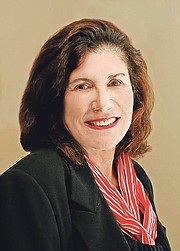We all know the obvious consequences of novel coronavirus, or COVID-19. We see the closed signs on shops, the empty airports, ports, schools and churches. We see an economy temporarily grinding to a halt. We hear the silence of streets after 9pm and we are far happier than we should be to see the garbage collection truck because it signifies activity.
What we don’t see are the underlying and perhaps strangest and most dangerous changes, of all – how we view each other.
Strangers are no longer friends we just haven’t met yet. They could be disease-carrying enemies. That man in the glasses at the other end of the produce aisle could be asymptomatic but carrying the virus. That woman in line waiting to get into the pharmacy may have had contact with one of the 21 confirmed cases of Covid-19.
We are suddenly looking at everyone on the street, in the food store, at the ATM as a possible enemy, a potential infector who could accidentally sneeze on us and change our lives forever. We have lost our trust because we can’t tell the good guys from the bad guys. They all look the same. No one is wearing a sign with official COVID-free declaration.
Distrust is a natural response in an uncertain time with an invisible enemy. What you cannot see is always more frightening than what you can. That fear is accelerated now by our social isolation. Safer at home inadvertently or covertly implies that what lurks out there could make us ill or kill us. I am not questioning the value of staying at home. We know it works and truth be told, it has a lot of positives. This is the most time I’ve spent at home with my family in decades and we are getting a lot of those odd jobs done and enjoying each other’s and all the cooped-up dogs’ company.
But the unspoken reality is we now look at everyone on the outside of our little world as a possible threat. And that is so sad.
Just when we need to pull together, we are scared of one another, distancing ourselves more and more as each day passes. As a friend said this week, “Thank heavens, my sinus isn’t acting up now. If I were to sneeze at the bank, people could panic and good luck with my explaining about sinus.”
You used to have to carry a gun or drugs or an undeserved grudge to be a public enemy. Now everyone is a suspect because we don’t know what of if they are carrying these potentially deadly germs you cannot see. We look at a stranger with daggers in our eyes if they get too close.
If we are not careful, coronavirus could take its toll on one of the country’s greatest assets – our Bahamian hospitality and warmth. Let us hope that when a vaccine is developed or the virus has run its course for this round, we slip back into what comes naturally, greeting each other with a smile and a hug, answered just as warmly with a grin and a reciprocal squeeze.
We need a plan? We have a plan
Prime Minister Dr Hubert Minnis, clearly troubled by the oncoming tsunami of a tourism-dependent economy in a crisis of closed borders, told the Bahamian public we must “shift how we operate,” with less reliance on those who visit and more on what we can produce whether tangible goods or intangible services.
We need a plan, he said, and he was absolutely right. The good news is we have one. It is called the National Development Plan Vision 2040 and forgive us if it was created under the PLP, it is one hell of a document, three years of study and research, 491 pages of extraordinary work under the direction of Dr. Nicola Virgil-Rolle and her team.
Developed under the auspices of the then-Minister for Investments in the Office of the Prime Minister, Khaalis Rolle, the plan is non-partisan and apolitical. Even the section on health (Pages 112-152) details specific actions that can be implemented to develop a healthier nation physically and mentally. Risk factors, actions, output, outcomes, costs, responsibility matrices and success measures are included.
You don’t have to love everything a former government did to embrace the successes it created. After all, the FNM did not throw out National Insurance in 1992 just because the PLP designed it.
Brother, can you spare a dime? How about a bit more?
With social distancing driving down the number of hot meals the Bahamas Feeding Network can prepare in its modest space on Fox Hill Road - where they have turned a small cottage into a massive kitchen capable of turning out 5,500 hot meals a week- the network needs more funding than ever to purchase, package and distribute hundreds of food parcels to compensate.
“So many people are out of work or on reduced wages so the need is greater than ever,” explains Bahamas Feeding Network Executive Director Philip Smith.
“We were prepping and cooking thousands of meals a week on Thursdays and Sundays, thanks in large part to our major corporate sponsor, Royal Caribbean which provided most of the food for all of 2019 and has continued to help as best they can given all that is happening. Our space is pretty tight so to observe all the protocols, we have had to switch to providing parcels of groceries that we can pass to persons in need or to church and feeding centre leaders for them to distribute.”
Each parcel of non-perishable items costs about $50 and can feed a family of four for up to one week.





Comments
birdiestrachan 5 years, 8 months ago
BAMSI is also good left in place by the PLP. The FNM should have hit the Ground running with BAMSI.
Sign in to comment
OpenID